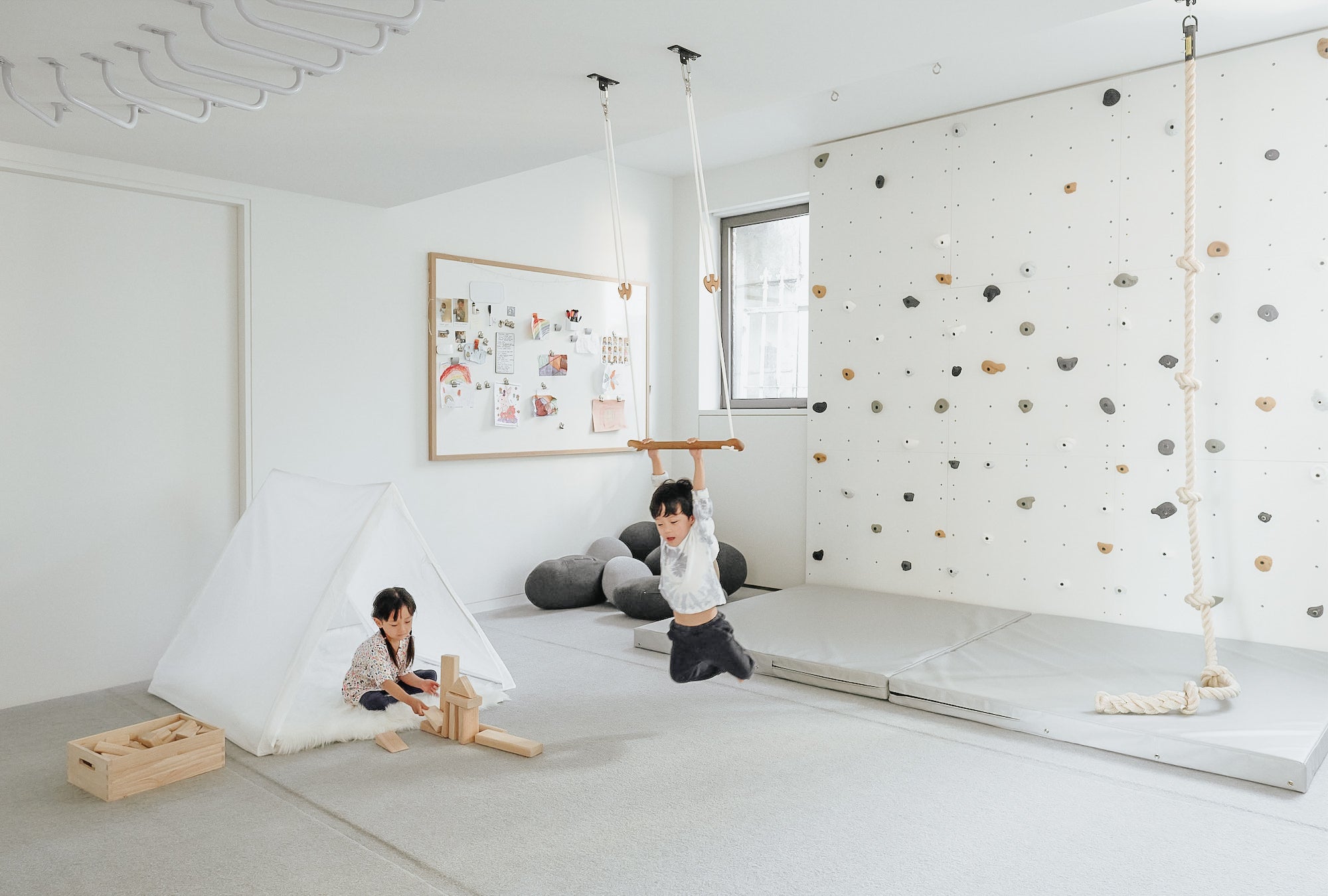Designing a playroom can be one of the most exciting projects for any home. It’s not just about creating a space where your children can enjoy themselves, but also about designing a room that grows with them. A well-thought-out playroom design balances creativity, fun, and function, making it a versatile space for play, learning, and relaxation. With thoughtful planning, you can create a room that fosters imagination while keeping clutter under control, making it a perfect addition to your home. In this guide, we’ll explore various elements of playroom design, from layout to storage solutions, ensuring your space is practical yet inspiring.
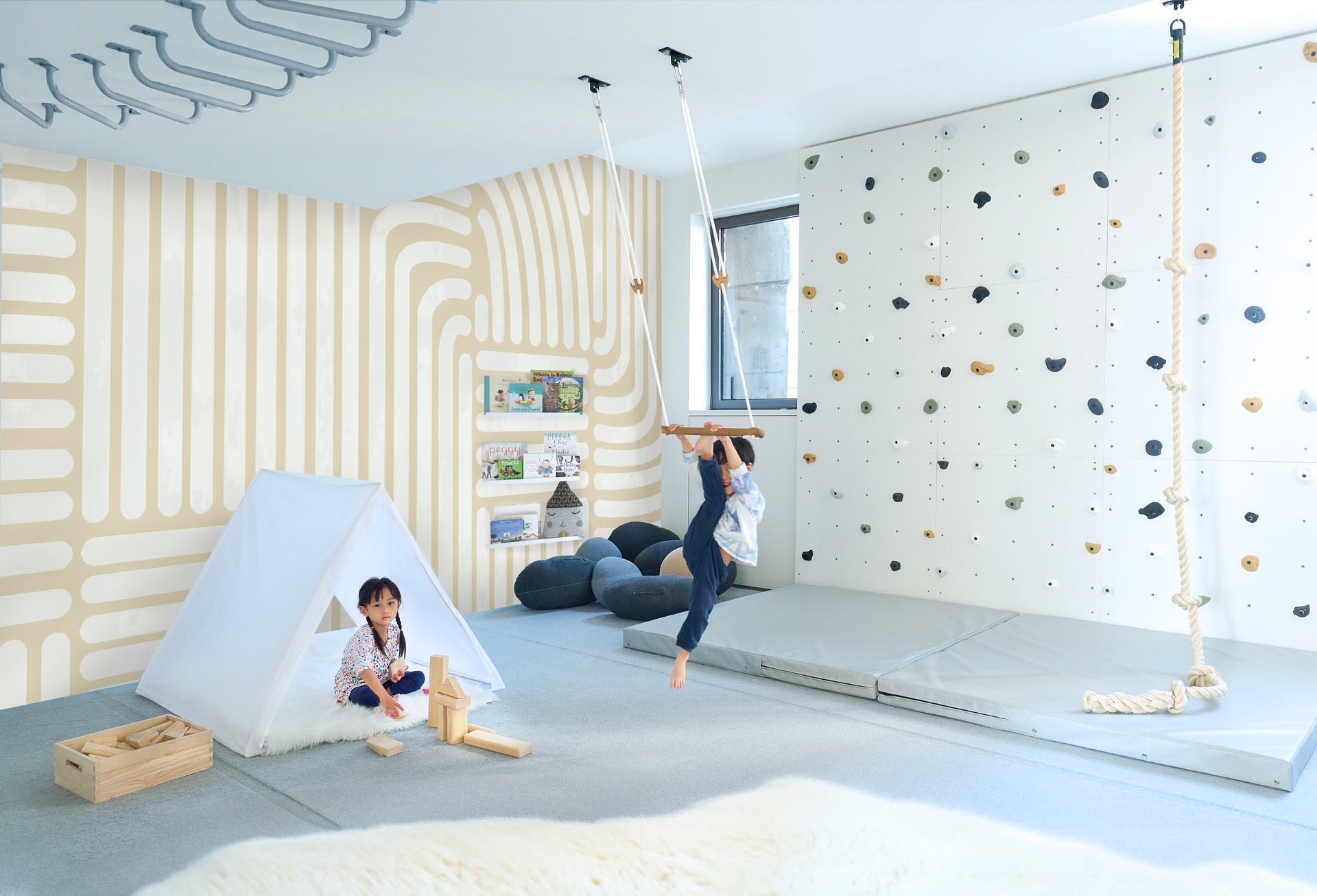
1. Playroom Layout Ideas: When designing a playroom, the layout is crucial to ensure the space is functional and safe. Start by dividing the room into different zones based on activities. For instance, create a dedicated area for reading, another for arts and crafts, and an open area for physical play. The flow between these zones should be smooth, allowing children to move freely without obstacles. Leave enough open space for them to run around and explore different toys. It's also essential to ensure that furniture is child-friendly, with rounded edges and made of non-toxic materials.
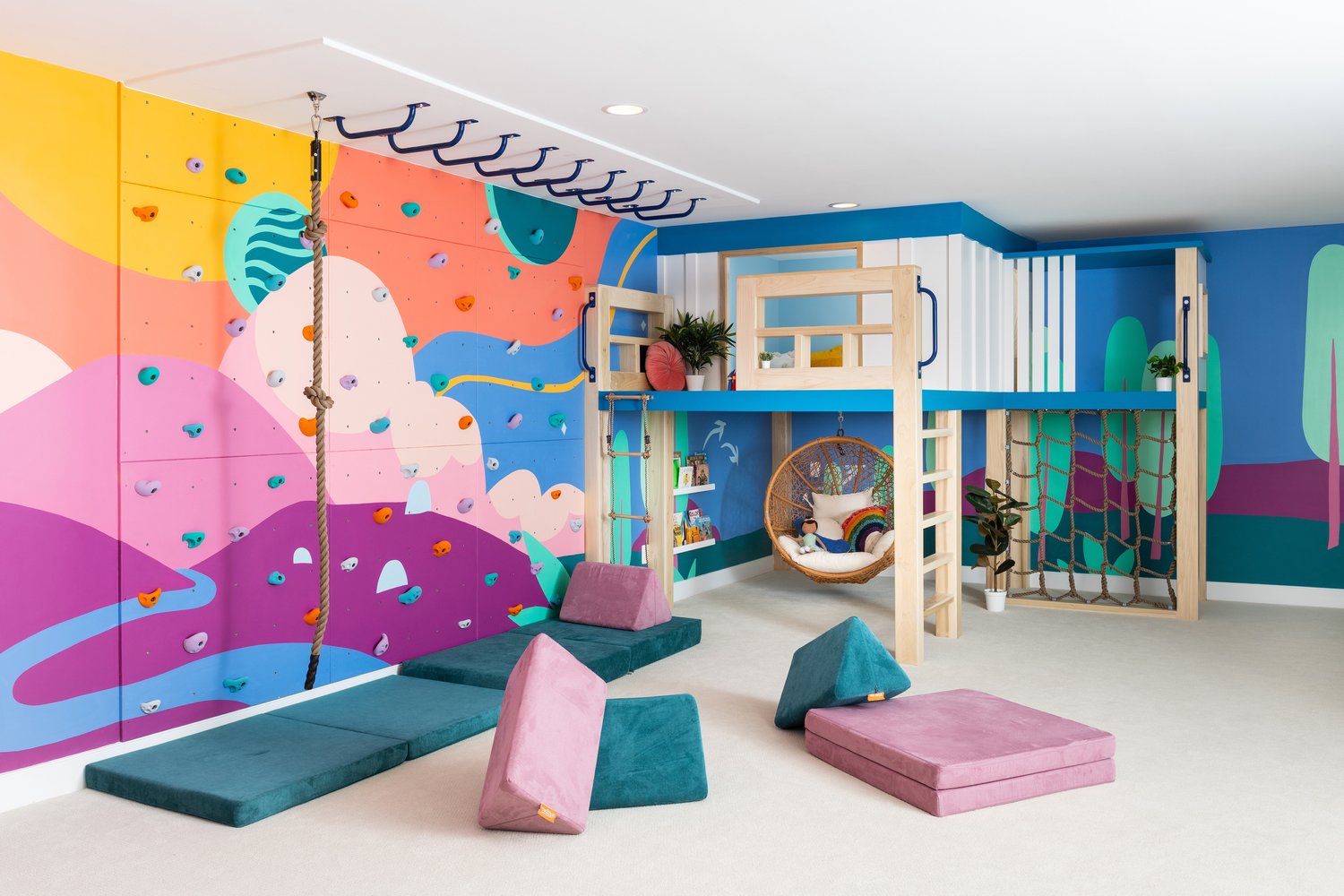
2. Playroom Furniture Selection: Furniture plays a key role in both the functionality and aesthetic of the playroom. Choose multi-functional furniture, such as storage benches or tables with built-in compartments. Small, colorful chairs and low tables make it easy for kids to engage in creative activities while maintaining a child-friendly environment. Modular furniture can adapt as children grow, making it a long-term investment. Additionally, ensure that everything is scaled to a child’s size for easy access and safety.
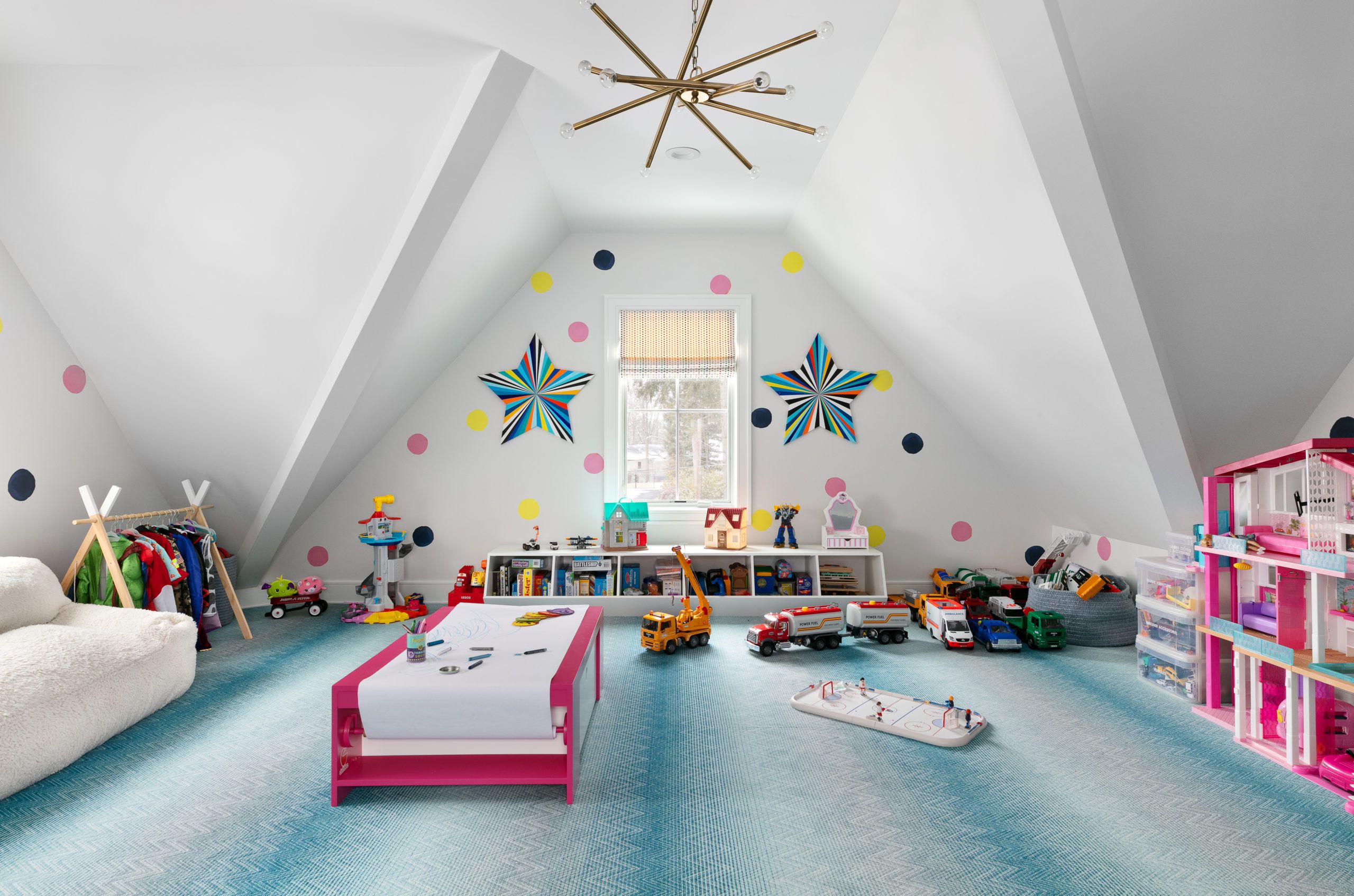
3. Playroom Storage Solutions: Effective storage is one of the most important elements of a well-designed playroom. Consider using open shelves, baskets, and labeled bins to store toys, books, and craft supplies. This not only keeps the room tidy but also encourages children to clean up after themselves. Incorporating storage into the furniture, such as under-bed storage or ottomans with hidden compartments, will maximize the use of space. Opt for adjustable shelving that can accommodate different sizes of toys and books as your child’s interests evolve.
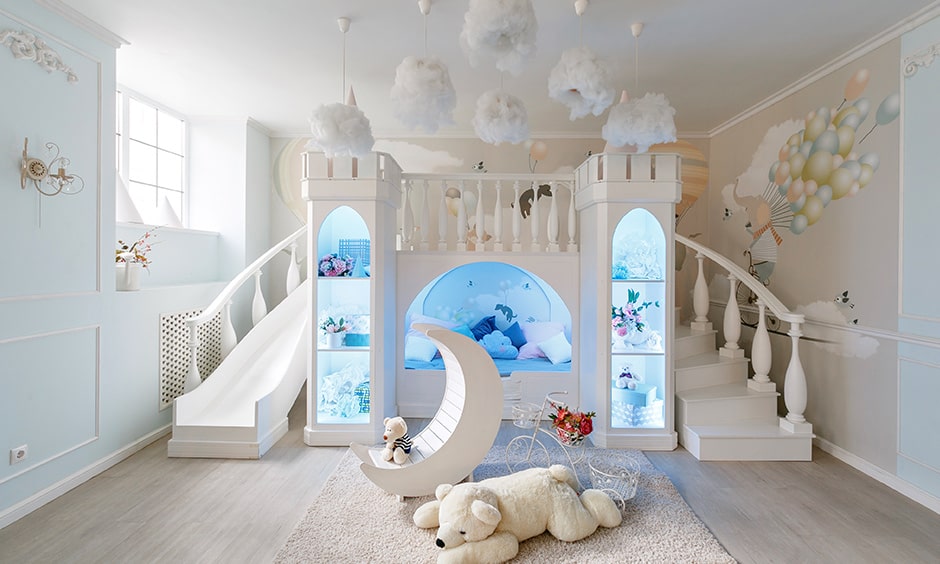
4. Creative Playroom Themes: Choosing a theme for the playroom can add a fun, cohesive look that inspires creativity. Some popular themes include jungle adventures, outer space, or underwater worlds. You can also create a minimalist or modern design with bright colors and bold patterns. Wall murals or removable stickers are great for adding thematic elements without committing to a permanent design. Ensure the theme is flexible enough to adapt as your children’s tastes and interests change over time.
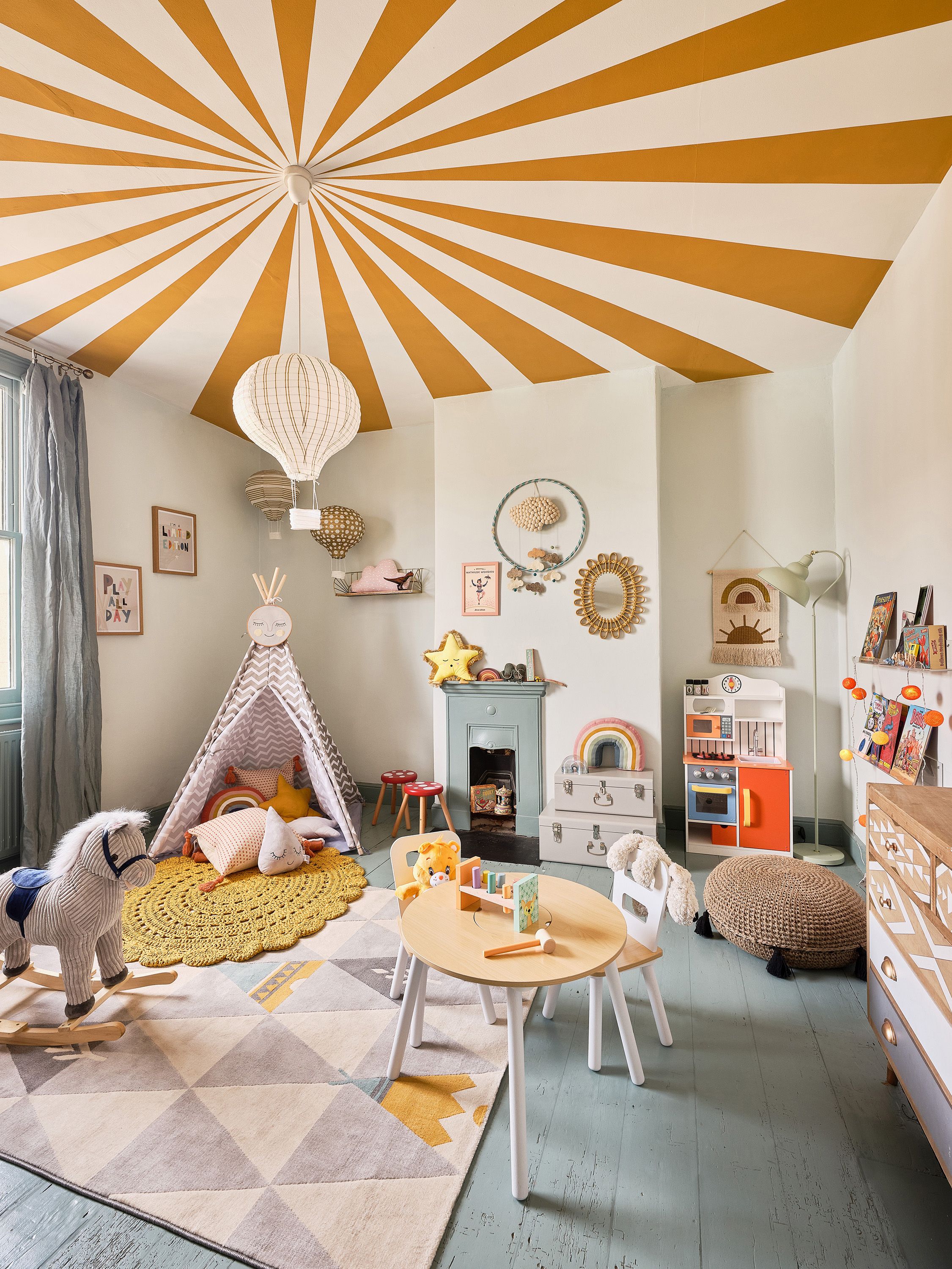
5. Playroom Flooring Options: The choice of flooring in a playroom is important for both comfort and safety. Soft flooring like foam mats, rubber tiles, or plush carpets can cushion falls and create a warm, comfortable environment for children to play on. For easy maintenance, consider materials that are durable and easy to clean, such as vinyl or laminate. If you prefer a wooden or hard surface, adding area rugs or floor cushions can add both comfort and style.
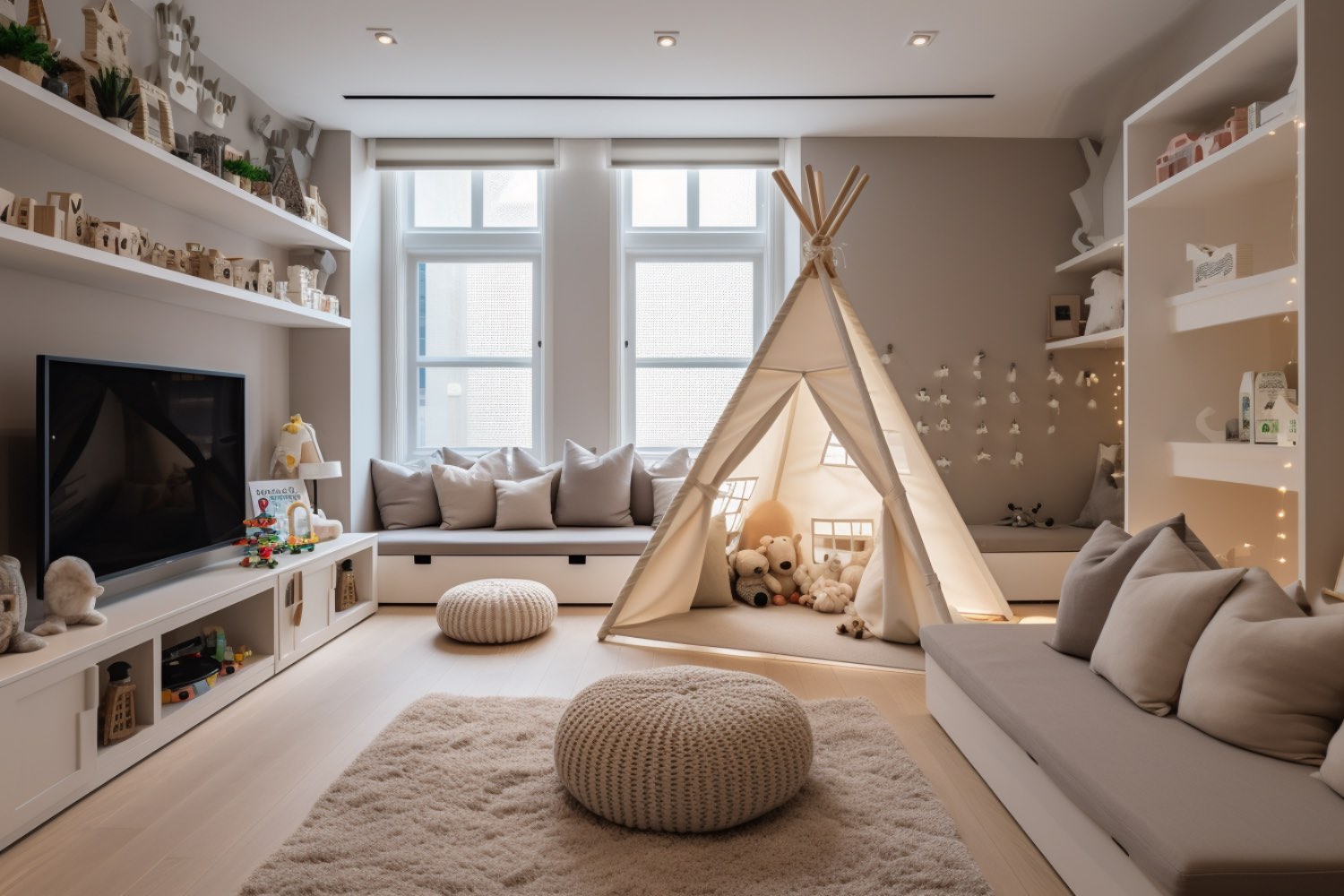
6. Playroom Lighting Design: Good lighting can enhance the playroom's atmosphere and make it more inviting. Natural light is ideal, so if possible, position the playroom in a room with large windows. For artificial lighting, a mix of ambient, task, and accent lighting works best. Install dimmable lights to adjust the brightness based on activities, from playtime to reading or resting. String lights or colorful lamps can also add a playful touch to the space.
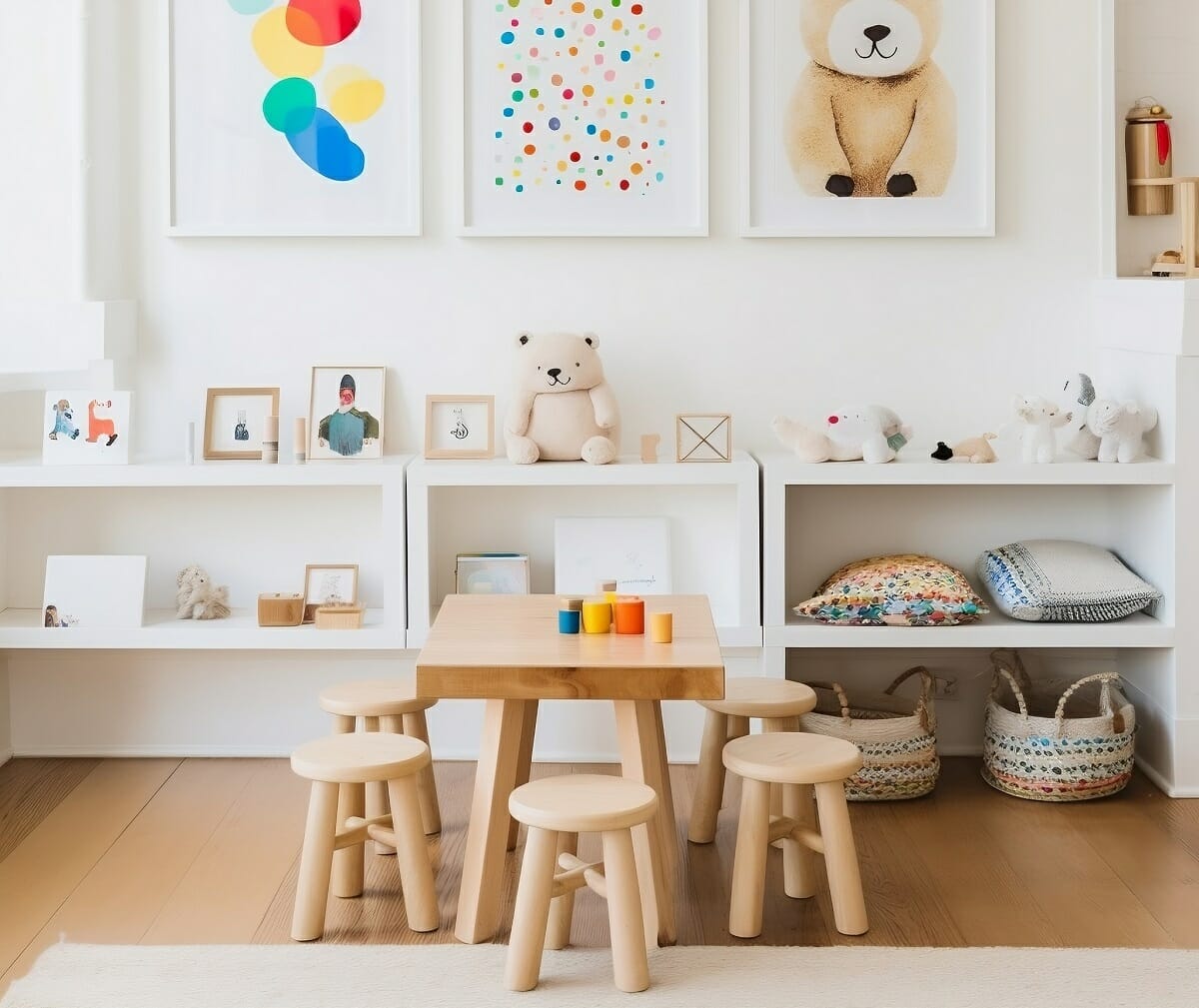
7. Educational Elements in Playroom Design: Incorporating educational tools into the design can encourage learning through play. Install chalkboards, whiteboards, or magnetic walls to foster creativity. You can also add alphabet rugs, number charts, or world maps to make learning fun and engaging. Create a reading nook with a small bookshelf and comfortable seating to promote early literacy. Rotate toys and games that encourage problem-solving and critical thinking to keep your child stimulated.
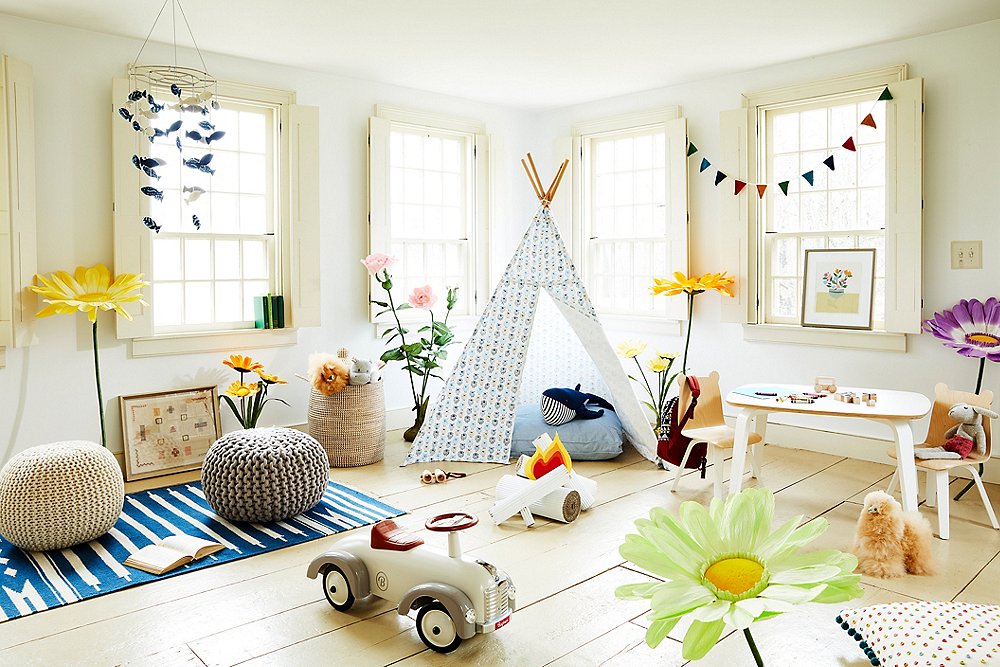
8. Playroom Safety Considerations: Safety should always be a priority when designing a playroom. Ensure that any heavy furniture is securely anchored to the wall to prevent tipping. Electrical outlets should be covered, and cords kept out of reach. Install safety gates if the playroom is near stairs, and opt for non-toxic, washable paint for the walls. Rounded furniture edges, child-proof latches on cabinets, and soft flooring will also minimize the risk of injury.
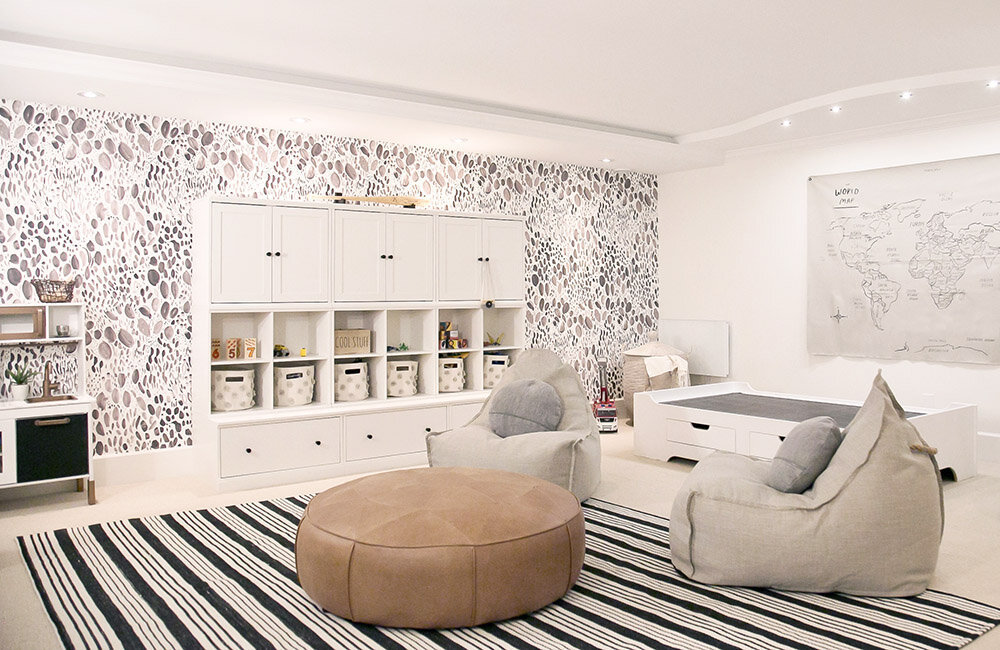
9. Incorporating Technology in Playroom Design: While physical play is important, technology can be a great addition to a modern playroom. Install a small television or interactive screens for educational games or movies. Smart speakers can also play background music or read audiobooks. However, it’s essential to set limits on screen time and ensure that technology enhances rather than detracts from imaginative play. Balance between traditional and tech-based toys will give your children a variety of activities.
